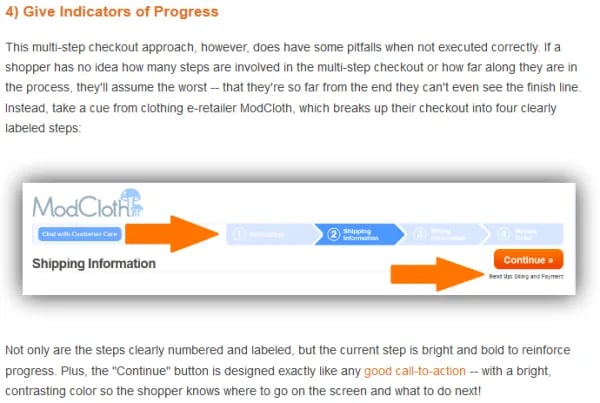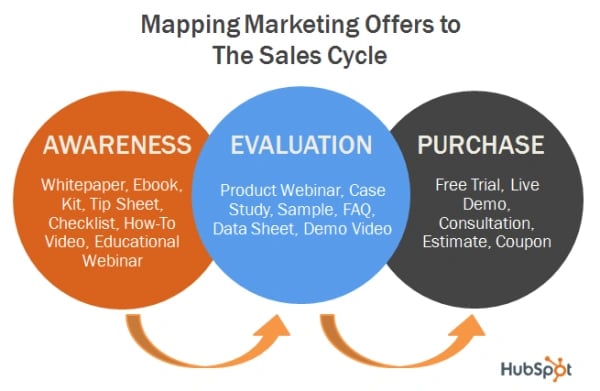Last week, we published a post written by a HubSpot partner, Velocity Partners, that discussed the importance of creating high-quality content. If you haven't read it yet, I highly recommend you do. You can view it here.
The need to create high-quality content, however, has put many marketers in a difficult situation: high-quality content takes a long time to create, and many just don't have the time to do it.
While it'd be nice to say, "tough noogies, find the time," that's neither realistic nor helpful. So instead, I've opted to brainstorm a list of very quick things that don't add on much time to your content creation process, but will instantly elevate the quality of the content you create. If you have a solid idea, and apply these additional measures before publishing, I think you'll find readers impressed with the uptick in your content quality -- and an uptick in traffic and leads should follow, too.
8 Quick Ways to Dramatically Improve Your Content Quality
1) Fact Check
While being accurate may not actively add anything to the quality of your content, inaccuracy in your content deals a mighty blow to content quality. Set yourself apart as the industry standard for unbiased, factually correct content -- the stuff your readers can always rely on. That kind of reputation is how thought leaders are born, and it elevates you next to your competitors.
Whether it's you or a colleague, do not press the "Publish" button until you've confirmed any facts are actually true. This is particularly important when you're newsjacking -- you're writing fast, and about new information, so it's easy to let a mistake slip through. If you aren't sure about the accuracy of something, be up front about it in your content and just say so. And if you ever do get called out for an inaccuracy, don't sweep it under the rug. Make the correction in your content, and thank the person who found the error. And then be 1,000 times more careful next time.
2) Include Data That Backs Up Your Points
When you're trying to convince your readers of something, data is a quick way to build instant credibility and convince your reader that -- to put it bluntly -- you know what the heck you're talking about. Consider this little excerpt from a post we published recently about Google's SSL encryption, and its impact on keyword research for SEOs:

We could just tell you that you should worry about Google's SSL encryption ... or we could show you, using data, why you should pay attention.
When using data, just be sure to properly cite it, and use reputable, current sources. If you're grabbing a social media statistic, for instance, it doesn't do much good if it's from 2009. That stat is completely irrelevant at this point. Similarly, it doesn't make you look too savvy if the stat is from Jillybeanscatblog.tumblr.com, or worse, if you try to cover up your sketchy data source by not providing any source information at all. Be transparent and critical with your data decisions. To learn more about using data to enhance your content, check out our post about 13 ways to spice up your marketing content with data.
3) Find Examples That Illustrate Your Points
Just like supporting data points can help you strengthen your case, using examples -- whether you're coming up with hypothetical situations or, even better, using real ones -- can lend a lot of clarity to confusing concepts for your readers. I used to work in the tourism industry, and we used to tell new hires, "When people are on vacation, they turn their brains off. Make it impossible for them to misunderstand you." That concept should be applied to your marketing content, too. If you're talking about (let's get meta here) how to incorporate examples into your content to heighten quality, then find an example of you or someone else doing that so it's totally clear what you mean. Like this example, for example (har har):

This example comes from a blog post, "How to Create an Ecommerce Checkout Experience Shoppers Don't Hate." I was explaining the importance of giving progress indicators to shoppers while they check out, so they can see how many steps they have left to complete. Instead of just stating it, I included an example from ecommerce company ModCloth to demonstrate the principle in action. Doing this makes your content instantly more valuable to readers who have a dozen other tabs open, IMs blinking, and emails filling their inbox. That's too many distractions to put the puzzle pieces together themselves; it's up to you to help do it for them.
4) Use Visuals to Illustrate Points
A picture's worth a thousand words. Trust me, I know. After writing an epic long post about content mapping, I was like, "Good gravy! There's got to be a better way to explain some of this stuff."
And there was, and it was a visual, and investing a little up-front time creating that visual has paid for itself over, and over, and over. Here, take a look at this visualization explaining how to map marketing offers to each stage in the sales cycle:

Now, go read this blog post that explains it.
Bet you didn't do that second one. Sometimes explanations just lend themselves to a more visual representation. And oftentimes you don't need a fancy designer to create this. The one above was put together relatively quickly and painlessly in PowerPoint.
5) Get Quotes From Thought Leaders and Subject Matter Experts
No one is an expert in everything. But the content creator's dilemma is that they're often asked to create content around subjects they only know only a little bit about. That poses a problem for content quality, to be sure. But the best way to get around this -- and this will make your life so much easier when writing about things you don't fully understand -- is to reach out to a subject matter expert or thought leader in the space. Ask them questions before you start writing to ensure your content is accurate, and be straightforward with readers; in other words, tell them that you consulted an expert for this post. You can even quote them.
I do this all the time when I write about email deliverability. We have a wicked smart guy working here, Evan Murphy, who specializes in email deliverability. I always consult him before I start writing, because it saves me hours and hours of research. He gives me quotable snippets I can include to increase the credibility of the content, and he always does a fact check for us before publishing to ensure everything is accurate. If you'd like to see an example of one of these, just check out this blog post, "How Marketers Can Avoid Those Dreaded Email Spam Traps."
6) Remove Any Jargon
High-quality content is easy to understand. Jargon, however, is decidedly not easy to understand. Remove any gobbledygook from your content before publishing it to ensure any of your readers can easily understand what you're talking about. Remember that some of your audience is more advanced than others, too. That's actually one of the reasons we started using skill-level tags in our content -- so we could adjust the language and subject matters we discussed to appropriately target the skill level of the reader. If you're unsure whether your content is hitting the mark, ask someone in your target audience to do a quick read of your content, and identify any jargon they don't understand so you can remove it.
7) Do Some Formatting, and Incorporate High-Quality Visuals
Formatting only takes a few minutes, but it makes your content meeeeellllions of times easier to get through. Who wants to read a piece of content that's full of dense text, and nothing else to break it up? This falls into the bucket I talked about earlier -- you know, where people turn their brain off on vacation. Well the phenomenon's not too different when they're reading content, either. No matter how high-quality the actual "content" of your content is, it doesn't really matter if no one is going to bother to read it, because it looks like a jumbled mess. Add some bullet points, some numbers, some bold headers, and some images to make your content look much more palatable, and much more high-quality. Not only does formatting and images make your content higher in quality, but it also makes it more engaging and shareable, too. It's no wonderphotos on Facebook generate 53% more Likes than the average post -- we're visual creatures after all!
8) Have Someone Edit and Proof
Finally, don't ship anything without a solid edit and proof. If you don't know the difference between an edit and a proof, now's the time to learn -- because it makes all the difference when you're trying to boost your content quality.
A proofreader will look through your content and correct minor errors, like misspellings, misplaced commas, that sort of thing. This is important, sure, but it's no replacement for a good edit. An editor will actually work with you on the storyline, the phrasing, the order of your points, and help identify what's missing. If you want to instantly increase the quality of your content, hire a freelance editor (or heck, bring one in house) who can make sure your content is consistent with your written style guide and can identify opportunities to make your content better ... or, depending on which editor you're working with, just make those changes him or herself.
What other quick tricks do you have for instantly boosting content quality?
Image credit: Tsahi Levent-Levi
Content Marketing



-1.webp)
![How to create a content style guide [+ free guide & examples]](https://53.fs1.hubspotusercontent-na1.net/hubfs/53/image1-May-07-2024-07-15-58-1152-PM.webp)







